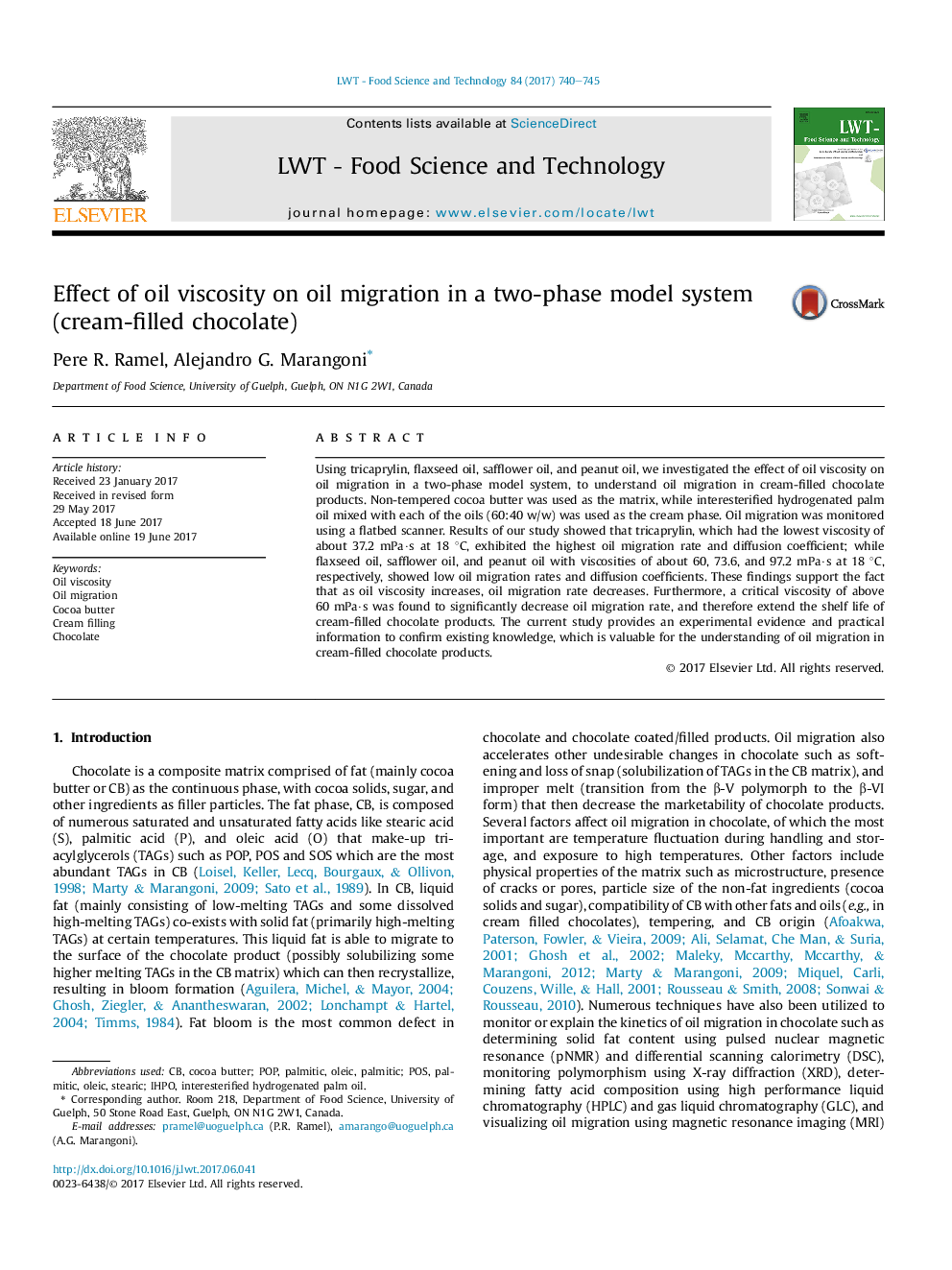| Article ID | Journal | Published Year | Pages | File Type |
|---|---|---|---|---|
| 5768998 | LWT - Food Science and Technology | 2017 | 6 Pages |
â¢Viscosity of oil affects oil migration in non-tempered cocoa butter matrix.â¢High oil viscosity results in low oil migration rate and diffusion coefficient.â¢Critical viscosity above 60 cP results in significant decrease in oil migration.â¢Use of high viscosity oil could extend shelf-life of cream-filled chocolate.
Using tricaprylin, flaxseed oil, safflower oil, and peanut oil, we investigated the effect of oil viscosity on oil migration in a two-phase model system, to understand oil migration in cream-filled chocolate products. Non-tempered cocoa butter was used as the matrix, while interesterified hydrogenated palm oil mixed with each of the oils (60:40 w/w) was used as the cream phase. Oil migration was monitored using a flatbed scanner. Results of our study showed that tricaprylin, which had the lowest viscosity of about 37.2 mPa·s at 18 °C, exhibited the highest oil migration rate and diffusion coefficient; while flaxseed oil, safflower oil, and peanut oil with viscosities of about 60, 73.6, and 97.2 mPa·s at 18 °C, respectively, showed low oil migration rates and diffusion coefficients. These findings support the fact that as oil viscosity increases, oil migration rate decreases. Furthermore, a critical viscosity of above 60 mPa·s was found to significantly decrease oil migration rate, and therefore extend the shelf life of cream-filled chocolate products. The current study provides an experimental evidence and practical information to confirm existing knowledge, which is valuable for the understanding of oil migration in cream-filled chocolate products.
